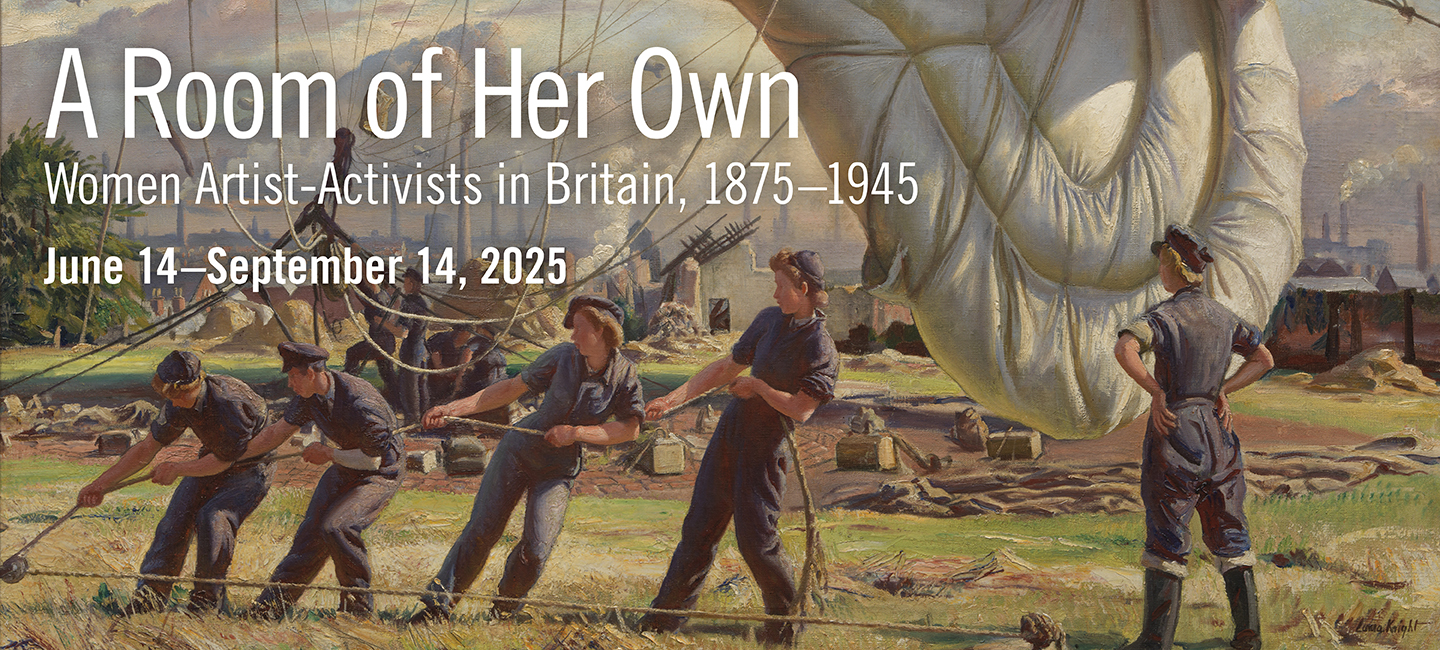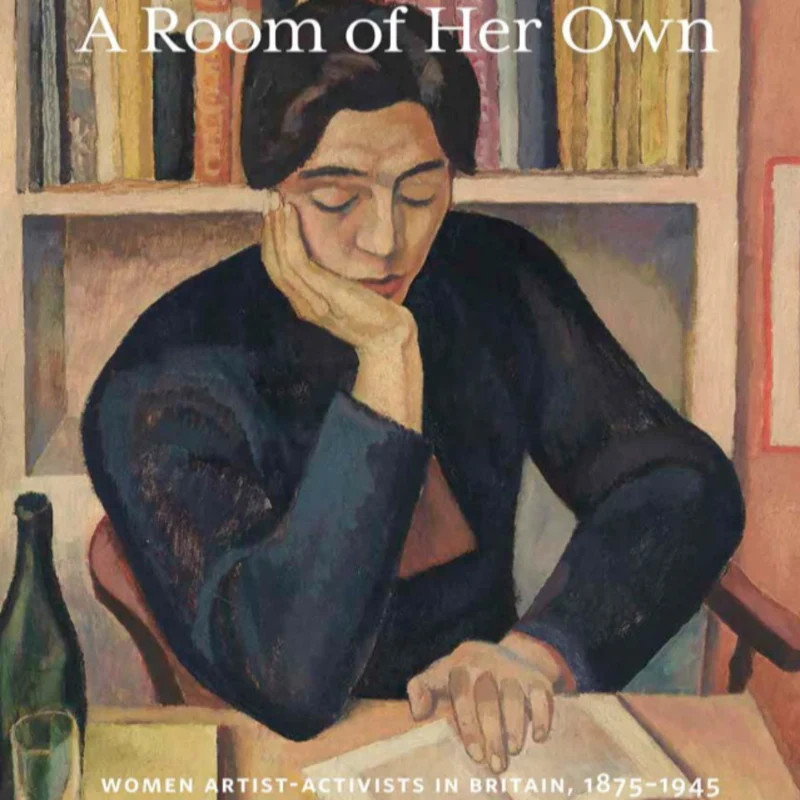Political Activism
 Louise Jopling, Through the Looking Glass, 1875, oil on canvas. Tate, purchased, 2023, T16213
Louise Jopling, Through the Looking Glass, 1875, oil on canvas. Tate, purchased, 2023, T16213During the late nineteenth and early twentieth centuries, women in Britain campaigned for the right to vote, known as suffrage. At the dinner table and in public marches and rallies organized by suffrage groups like the National Union of Women’s Suffrage Societies and the Women’s Social and Political Union, women argued that, as citizens and taxpayers, they should have a say in electing officials who made laws that affected them.
Many artists featured in this exhibition advocated for women’s suffrage. Mary Lowndes led the Artists’ Suffrage League, a group of artists, including May Morris and Marianne Stokes, who created banners, posters, and postcards that helped define the campaign’s public messaging. Louise Jopling lent her celebrity to the cause, marching in processions, writing letters to newspaper editors, and hosting meetings in her studio. Helen Blackburn’s 1897 pamphlet Some Supporters of the Women’s Suffrage Movement named Jopling as well as Helen Allingham, Anna Alma-Tadema, Evelyn De Morgan, Elizabeth Adela Armstrong Forbes, and Annie Swynnerton, among others.
During World War I, suffrage societies suspended their activities and encouraged their members to contribute to the war effort. Many women, for the first time, worked outside the home in factories and stores, or on farms as members of the Women’s Land Army. Women’s roles in public and private life were changing, and in early 1918 the Representation of the People Act granted the right to vote to women over the age of thirty who met property qualifications. In 1928 all women over twenty-one were enfranchised.

